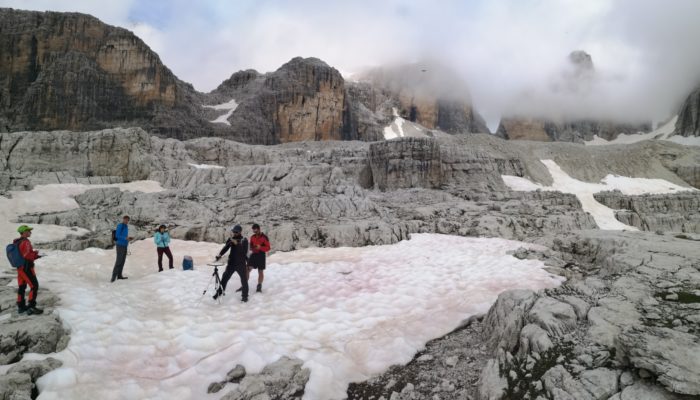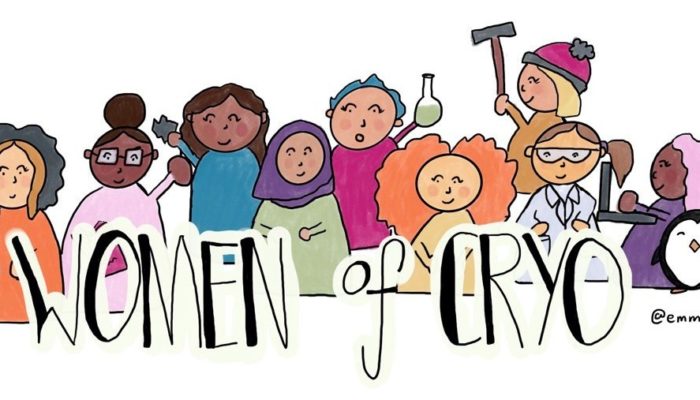We are used to think of algae as marine or lacustrine organisms, but they are actually able to thrive also on the cryosphere. In a previous post, we learnt how snow algae live and reproduce on snow. Now we will explore how and why scientists study snow algae, and how social media can be used for identifying new study areas. Snow algae in the Alps Snow algae in the Alps have been overlooked or conf ...[Read More]
Climate: Past, Present & Future
Atmospheric Rivers: the water tap of extreme precipitation
Extreme precipitation events, i.e., heavy rain episodes of short duration, can lead to severe or even catastrophic social and economic impacts, as seen recently in different flooding and landslide incidents throughout the world. One of the drivers behind these events is the occurrence of atmospheric rivers (ARs), a mechanism that transports great amounts of water vapour across the globe, and signi ...[Read More]
Hydrological Sciences
100 Ideas to Communicate the Value of Hydrology
Hydrologists are a pivotal part of modern societies where the delivery of enough clean water to populations relies on their decisions to manage complex systems of resources. Flood hydrologists develop and operate computer models with the aim of meeting the World Meteorological Organization’s (WMO) long-term ambition that “no one is surprised by flooding”. Despite this critically important dual rol ...[Read More]
Geodynamics
Repurposing a research tectonic modeling code as a community service: The case of DES3D
This week, Dr. Eunseo Choi, a professor at the Center for Earthquake Research and Information, the University of Memphis, talks about tectonic modelling using DES3D. *Spoiler alert* read till the end for an exciting opportunity to work on it The advent of the open-source movement and the free public software repositories such as GitHub have drastically improved the way research codes are maintaine ...[Read More]
Natural Hazards
Natural Hazards 101: Multi-hazards and multi-hazard risk
With the Natural Hazards 101 series, we mean to bring our readers closer to the terminology often used in the field of natural hazards, but that may not be so familiar. In the first episode of the series, we focused on the definition of hazard and natural hazard. We moved then to the concepts of risk, disaster risk management, and the forecasting and modelling of natural hazards. In this episode, ...[Read More]
Tectonics and Structural Geology
Features from the Field: Sheath Folds
Shear zones are areas of intense deformation that localize the movement of one block of the crust with respect to another. In previous posts, we have seen that shear zones contain some very deformed rocks called mylonites, lineations that tell us the direction of movement, and useful kinematic indicators, such as S-C fabrics, that allow geologists to understand which way the rocks moved. However, ...[Read More]
Cryospheric Sciences
Women of Cryo IV: Virginia ‘Ginny’ Fiennes (1947 – 2004)
Women make up 50.8% of the worlds population, yet fewer than 30% of the world’s researchers are women. Of this percentage, BAME (Black Asia and Minority Ethnic) comprise around 5%, with less than 1% represented in geoscience faculty positions. The divide between women in the population and women in STEM needs to be addressed. Through a series of blog posts we hope to raise the voice of women in th ...[Read More]
Geodynamics
The Sassy Scientist – Finished Business
Writing a paper can be challenging. While it can be satisfactory to see your science coming together in a consistent story, writing a nice paper requires you to prepare appealing figures, a bullett-proof text and, potentially, dealing with co-autors. Mirja asks: How do I finish a paper? Dear Mirja, Interesting question: over (more than a) few beers I heard colleagues and peers wondering how to sta ...[Read More]
Hydrological Sciences
Behind every robust result is a robust method: Perspectives from a hydrological case study
Scientific studies and mathematical models are increasingly used to guide the management and development of society. But while science and modelling can indeed provide a robust basis for decision making, we must be mindful of two related considerations. First, science is based not on trust but on skepticism, meticulous technique and careful verification. Second, science is not made of absolute tru ...[Read More]
Geodynamics
Simulating materials in the Earth’s interior using atoms
This week UCLA PhD student Leslie Insixiengmay takes us on a microscopic journey to the Earth’s interior and tells us all about the atomic forces that shape the deep Earth behaviour! A question I get asked a lot is: “How do we know what’s inside of the Earth?” It’s a good and valid question considering that the deepest hole humans have dug only reaches about 12.2 km, which is about 0.2% of ...[Read More]










